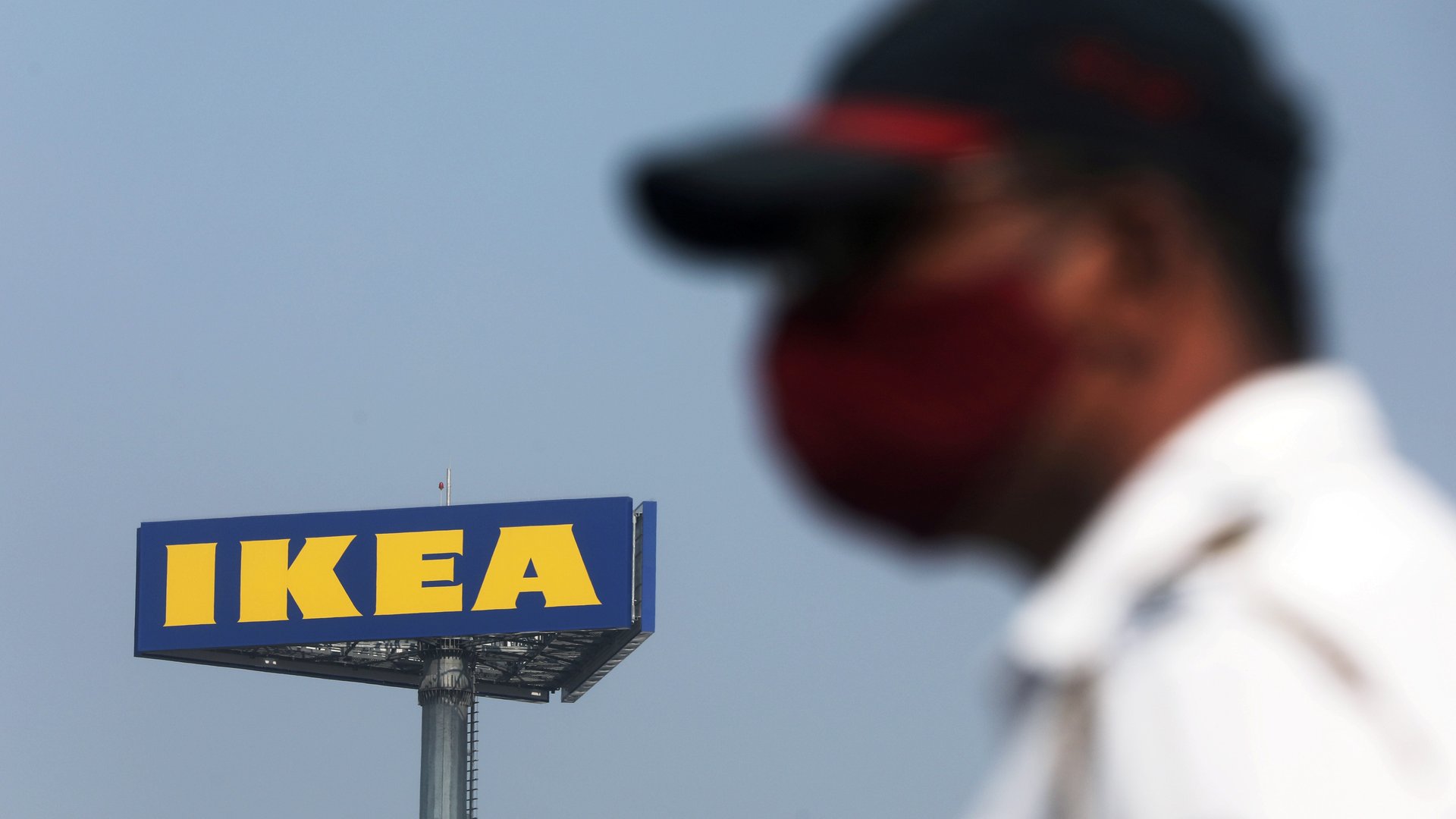Ikea is opening in a very different Philippines than it planned for
IKEA has opened its largest store in the world today—and its first physical location in the Philippines.


IKEA has opened its largest store in the world today—and its first physical location in the Philippines.
The vast space of 700,000 square feet (65,000 square meters)—the size of the Palace of Versailles—stretches across five floors in a mall complex nestled against Manila Bay. Thursday’s debut (Nov. 25) is fitting for a country with high growth rates and a booming middle class of young professionals looking to spend money on stylish furniture in homes newly purchased during a roaring property boom. At least, that was the Philippines before the pandemic hit.
Nicholas Mapa, a Manila-based senior economist at ING, the international financial institution, said that when he met IKEA executives in 2018, the year the project was first announced, “They did have quite a rosy outlook on the Philippines, and particularly the middle class, given its size and the purchasing power that they carried.”
“Then we got hit by covid, and that sort of knocked it out,” Mapa said, referring to the earlier economic conditions.
Supply chain issues, draconian restrictions on movement that prevented construction workers from going to the building site, and a volcanic eruption in January 2020 that dusted Manila in ash, contributed to IKEA delaying the original 2020 opening date by a year. Due to ongoing health concerns, in-person shopping at the IKEA store will require booking a time slot, and the store will limit shoppers to half its capacity of 8,000 people. The Philippine trade secretary and foreign minister were present at this morning’s opening—where they were served Swedish meatballs in adobo sauce, according to Bloomberg.
A vulnerable middle class
In the depths of the pandemic, the Philippines was posting some of the steepest contractions in Asia. After growing at about 6% a year for a decade, the economy contracted by nearly 17% in the second quarter of 2020, according to the country’s National Statistics Office.
To control covid, the country enforced one of the world’s longest lockdowns, leading to repeated work stoppages as offices were forced to close. At its worst, the unemployment rate hit 10% in July 2020. Savings were depleted, dragging on the purchasing power and economic security of the middle class.
Spending like a “baby US”
IKEA’s eight other stores in Southeast Asia, in Thailand, Malaysia and Singapore, serve the region’s middle-class boom, where consumer spending is projected to double by 2030. While the Philippines has a lower GDP per capita than the three other nations where IKEA has stores, it’s an anomaly in the region that favors middle market retailers like IKEA.
Mapa says the Philippines doesn’t “fit the usual ASEAN mold,” referring to the region’s economic bloc, the Association of Southeast Asian Nations (ASEAN). “I still say we’re a baby US, in the sense that it’s very consumer-centric,” Mapa said. In 2020, Philippine households spent the equivalent of 73% of GDP on goods and services, more closely tracking the US (68%), its former colonial power.
By comparison, the Philippines’ near neighbors are more parsimonious: Thailand’s consumption rate is 53%, and Indonesia’s 59%, according to the most recent data by the World Bank.
Combined with accessible credit and the benefits of a young population with a lifetime of furnishing their first homes, upgrades and renovations ahead of them, IKEA deemed the country’s prospects robust enough to make it a regional hub. That’s part of a broader expansion in Asia that has included both large stores in India and South Korea, as well as small-format stores in Japan and Singapore.
Reason for optimism
As the country emerges from the brutal lockdown, IKEA is opening on the back of a surprisingly good third quarter in which the economy grew 7.1% from July to September compared with a year earlier. That came despite a six-week lockdown, and surpassed the 4.3% growth forecasted by the Philippine Central Bank, benefiting form a low base effect from last year’s contraction. According to the Philippine Statistics Authority, the expansion was driven largely by consumer spending.
Mapa says the bump could be a period of “revenge spending,” as a population cooped up at home for the last 20 months ventures back into the outside world during the Christmas shopping season. In the Manila area, official covid numbers are averaging under 300 new cases a day, as of this week.
For the next year or two, though, Mapa expects slower spending as Filipinos rebuild their savings, but expects consumer sentiment to improve as the pandemic fades into the horizon. “Eventually, I think the investment to get into the Philippines will pay off,” Mapa said.
In July, Ikea saw unexpectedly high interest in registrations for a customer membership program that offers discounts and other perks, prompting technical difficulties and an apology. Meanwhile, the website shows in-person slots booked out through Dec. 2.
“Prospects look good,” he added, though it depends on what happens with covid. “Just hoping for no more of these lockdowns and work stoppages.”